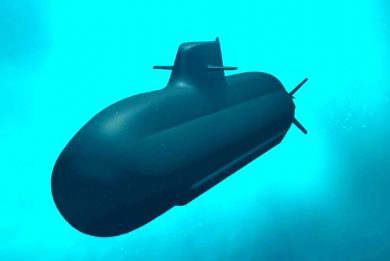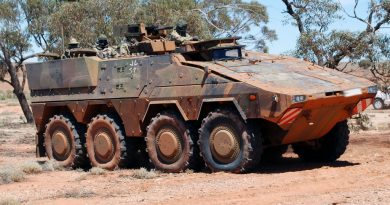U212 NFS programme: state-of-the-art Lithium Battery System since the first-of-class boat
On 27 June 2024, a significant milestone was reached by the OCCAR (Organisation Conjointe de Coopération en matière d’Armement/Organisation for Joint Armament Co-operation) concerning the U212 NFS (Near Future Submarine) programme: in addition to the activation of the NFS 4 optional package (procurement of the fourth boat), the fourth amendment to the contract signed between OCCAR and Fincantieri in February 2021 also included an upgrade to the battery system, transitioning from the previous lead-acid technology to a new generation Lithium Battery System (LBS), which will equip the NFS class submarines starting with the first of class boat, to be delivered in early 2029.
The contractual modification to implement the LBS on board the U212 NFS submarine class represents a remarkable achievement in the underwater domain for the Italian Navy, the MoD’s Naval Armaments Directorate (NAVARM), the OCCAR through its NFS Programme Division led by RAdm Maurizio Cannarozzo, and the national industry team headed by Fincantieri and including FIB-FAAM, Power4Future (P4F), the joint-venture between Fincantieri SI and Faist Electronics, with the crucial support of CETENA. These achievements, obtained with a challenging project ensuring the highest safety standards, will allow OCCAR to proceed with the contract award to the industrial team led by Fincantieri for the Phase 2 of the LBS programme, after the successful completion of the on-going prototype qualification activities to be by year end. The Phase 2 contract will include the battery production line set up, the delivery of the first complete LBS to be qualified at a new full scale test laboratory facility before being installed on board the NFS 1 to conduct the harbour and sea acceptance trials.
LBS programme development and industrial team
Current strategic scenarios impose a continuous technological evolution which is also at the base of the work led by NAVARM and the Italian Navy General Staff. The latter have pushed the national industry to develop a new generation LBS for the propulsion of the new Italian Navy U212 NFS submarine class.
The search by Italian MoD and Navy for a performance and security better than “lead propulsion battery” in terms of efficiency, endurance and energy storage capacity, started in 2013 through different subsequent national military research programmes (i.e. Far Seas), which resulted in the selection of an Italian new generation propulsion battery as best engineering option to reach the target.
Lithium-ion batteries represent one of the best technological solutions to enhance the modern non-nuclear submarines capability to store energy on board while increasing their stealthiness.
“Compared to a lead-acid solution, a lithium battery offers higher performance alongside higher modularity, scalability and less maintenance. It can already ensure an energy density in volume almost double that of a lead-acid one, possibility of fast charging at high current, constant voltage over a wide discharge range, very low self-discharge, high efficiency and absence of memory effect, high number of cycles as well as a longer service life with an extension trend, based on current ageing test, toward about 10 years compared to five of the current lead-acid solution,” said Commander Alessandro Irvia, Platform Officer at OCCAR U212 NFS Programme Office. “Overall, that means a lower indiscretion rate and a much higher submerged endurance at high speeds, ensuring evasion capacity when necessary, which means higher survivability,” he continued.
“The LBS is a game changer in the underwater domain as thanks to its modularity and scalability, it could be applied to any architecture and underwater manned and unmanned vehicle. It offers the highest growth rate in technology benchmark with next generation semi solid/solid state design batteries available in the 2026-2030 timeframe,” Commander Irvia highlighted. Under the supervision of NAVARM and later on of OCCAR U212 NFS programme division, the work of the industry team, the national excellences in the sector, focused on these main advantages, but ensuring the maximum operating safety on board a sophisticated and complex asset as the modern submarines was mandatory.
Alongside Italian Navy experts and the OCCAR programme team, the industrial and risk reduction and safety assessment activities have been conducted by a team headed by Fincantieri, the U212 NFS programme design authority, which has been providing the LBS project management and the auxiliaries development, alongside the preliminary design and main reviews, and the LBS integration on the submarine. With a huge experience as producer of lithium-ion cells and battery packs, including the battery management system (BMS), FAAM/FIB was responsible for the LBS components development including the cells, module casing, internal cooling system and the BMS module in addition to cell and module qualification. The P4F JV was responsible for the LBS functional safety design, alongside the string electrical connection, converters, BMS hardware, firmware and software development, qualification and the electrical calculation. With a large experience in the certification of energy storage systems based on lithium battery technology, TÜV Rheinland has conducted the HAZID/Risk and Safety assessment and will certify the whole system with the support of Fincantieri’s CETENA research centre which developed the system Risk Analysis and Risk Assessment. The latter determined the feasibility of the safety systems achieving the requirements related to the LBS in a complete configuration (components, accessories, safety barriers, auxiliary systems, power supply, ect.).
The LBS main components
According to an Italian Navy and MoD presentation, FIB-FAAM developed a cutting-edge 65 Ah stylus cell, with electrodes properly conceived and designed, based on lithium-iron-phosphate (LiFePO4) chemistry. “These are very stable at high temperatures and can withstand strong mechanical stress, i.e. in situations of potential risk of fire or explosion, due to a so-called thermal runaway. Particular attention was paid to prevent chemical and mechanical ageing phenomena, considering the peculiar environmental conditions of a submarine.” The cylindrical shape of the cell ensures higher structural robustness and greater dissipation of any heat, while passive in-cell defence to control cell temperature, safety valve, and a gas management and refrigeration system, ensure the highest safety level.
Although the NFS hull will be stretched by 1.2 metres to house the new longer sail and underneath more spacious combat operation room with a new combat management system and mission suite, the LBS design is driven by the U212A battery room volume, to allow the application of the same solution for the upcoming midlife upgrade of in-service U212A boats, to ensure a conspicuous increase of endurance.
The cells, according to the Italian Navy presentation, will be contained into robust stainless amagnetic steel shock proven cases, ensuring mechanical protection as well as a uniform temperature gradient across the whole battery and compensating the lightness of the lithium cells compared to lead accumulators. Each case, or string, integrates a suitable number of cells connected in series to reach board network voltage, their cooling circuit and a first layer of passive and active safety devices as part of a first BMS level. Each string has the same dimensions of six lead-acid elements and could be conceptually associated to a partial battery, capable of providing the nominal battery voltage through a DC/DC control converter. “As anticipated, the LBS has been conceived to be easily improved in capacity, with the change of the under-qualification cells with new ones in the future, once the technological improvement in the lithium-ion technology field will be available,” Commander Irvia said.
The properly designed Battery Management System (BMS) continuously checks temperatures, currents, voltages and electrical insulation, suitably intervening when unacceptable deviations occur, protecting both the battery and the submarine itself against damage propagation between adjacent cells. The NFS will also feature a newly designed fire-protection system for the battery room including an extinguisher.
The development of the LBS for the U212 NFS required a structured process of risk assessment from the initial phases of the project to identify the risk mitigation measures and the definition of the Safety Integrity Level (SIL). The latter is the reliability index that encapsulates these requirements, i.e., the measure of the minimum reliability required for a particular safety system. Current international technical regulations, IEC 61508 first, impose a SIL-based approach focused on compliance with U212 technical requirements (shock, EMC, environmental conditions) through an accurate hazard identification and risk assessment and reduction, here systematically applied under TÜV Rheinland’s institutional seal, compliant to a SIL 3 level, as defined by the Italian Navy since the programme initial phase, in a 1-to-4 level scale.
Looking to life cycle costs, the initial investment (higher compared to lead-acid batteries) will be dampened by recycling components (the cases or the refrigeration system) and by the very low manpower needed for maintenance, while maintaining all the performance benefits already mentioned.
Latest achievements and future developments
Before the achievement of the LBS Critical Design Review, the system successfully passed the System Design Review (SDR) in March 2022 and a series of follow-on key tests which highlights the maturity reached by the LBS. In a dedicated LBS presentation at the Undersea Defence Technology (UDT) 2024 conference and exhibition in April 2024, Commander Irvia confirmed the successful completion of a thermal propagation test with no flame or explosions being produced, only gas being released. The new version of the safety systems of the LBS will be capable of managing such a gas release. Tests that have been previously passed included thermal runaway, nail penetration, external short circuit, electrolyte conductibility, high temperature charge and discharge cycles and gas composition, in addition to the tests required for lithium batteries transportation according to UN38.3 section by TÜV Rheinland and the tests for new IEC 62619 regulation for safe operations of secondary lithium cells and batteries used in industrial applications.
“The design, development, prototype production and certification of main components is continuing as anticipated,” said Commander Irvia: in these days P4F has been testing the first complete string and in parallel the SSC (Single String Converter) prototype, while the battery bus bar and auxiliaries prototypes are under production. At the same time, components are being qualified and will be used to produce the Functional Mock Up of a battery, which test qualification activities will then start, the aim being to complete them by year end.
The successful achievement of the contractual modification, which dictates the passage from a boat with a lead-acid to a lithium-ion battery solution, has allowed the OCCAR team to enter the LBS Phase 2 that includes the set-up of the industrial production facilities and the launch of the production of the first complete LBS. On parallel, a real size LBS test laboratory facility will be set up and certified to accommodate the first production LBS kit and complete all its qualification tests. “The Italian Navy aims to make this laboratory a Centre of Excellence (CoE) for the underwater (battery) propulsion domain, which will be used not only for certification and training activities but also for future developments to be mounted on manned and unmanned platforms.”
Once this activity will be completed the LBS will be ready for installation on board the U212 NFS 1. The project to equip the first-of-class boat with the LBS hasn’t been without challenges and longer-than-expected qualification steps to offer the highest standard of safety in addition to the demanding construction milestones which were affected by the materiel supply chain issues caused by the pandemic and the conflict at the borders of Europe.
The U212 NFS 1 platform production is developing according to the latest schedule, which will see the launch of the boat in 2027, subsequent harbour and acceptance trials to achieve the NFS 1 delivery in early 2029, while the initial programme’s milestone set before the pandemic was December 2027.
Images courtesy NAVARM and OCCAR, photo L. Peruzzi









